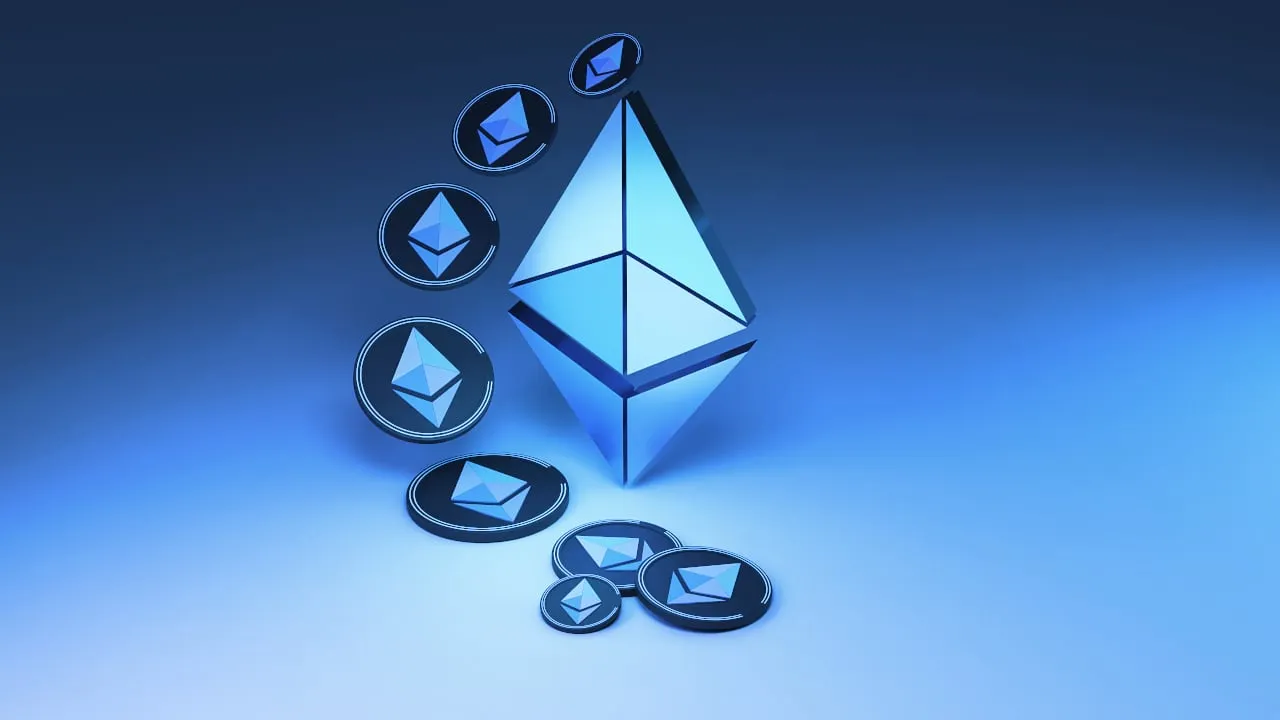Has the move to proof of stake made Ethereum more centralized and censorship-prone?
With its shift from proof of work to proof of stake last month, Ethereum now relies on validators, not miners, to add new transactions to the network. Those validators get to decide what transactions go into each block and in what order. Although that’s already lowered the energy consumption of the network by 99.99%, it also means that a large portion of the ETH securing the network sits with centralized entities.
That runs counter to all the reasons Ethereum was made to be decentralized in the first place, critics say. Blockchain networks aren't supposed to be at the whims of powerful, central entities.
As of last month, 13.5 million ETH (worth $22.3 billion at the time) had been staked on the Ethereum network, with more than 60% of that ETH sitting with Lido Finance, Coinbase, Kraken, and Binance. That means these centralized entities have a much higher likelihood of being assigned blocks of transactions to add to the chain—and may end up having an outsized say-so in what is and isn’t allowed on the network.
The numbers have shifted slightly since the network’s shift to proof of stake. There’s currently 14 million ETH (worth roughly $19.2 billion as of this writing) staked on Ethereum, according to blockchain analytics firm Nansen. And the distribution among centralized exchanges and Lido, which is managed by the Lido DAO, remains unchanged.
But the ETH centralization issue still gets more fraught because not all of the big, centralized validators have ruled out omitting transactions to stay compliant with Office of Foreign Asset Control (OFAC) sanctions.
For example, they could avoid processing funds being sent to or from Tornado Cash wallet addresses that have been sanctioned by OFAC. The whole issue is made more complex by the fact that Coinbase is currently funding a lawsuit against the U.S. Department of Treasury and OFAC to challenge its sanctioning of the Tornado Cash wallet addresses.
Caleb Sheridan, co-founder and product lead at Eden Network, told Decrypt he sees the centralization as a concern, but not a huge one.
He added that's there's enough ETH in circulation that isn't staked that other parties could, in theory, deposit more to outstake the centralized incumbents, thereby minimizing their control of the network. The 14 million ETH that is currently staked only represents about 12% of the 121 million supply, according to data from Ethereum block explorer Etherscan.
“I imagine we would see more [ETH] staked to counteract any behavior perceived as harmful to the network,” Sheridan said.
Eden Network runs one of several MEV-boost relays, a service that validators can use to outsource block production and maximize their revenue. It’s one of several companies to do so. Leading up to the merge, Figment, an Ethereum validator, announced that it would use the Flashbots MEV-boost to increase revenue.
The way Ethereum now works, each validator that adds a new block of data to the chain also gets to choose which transactions go into that block. So it’s possible that a validator could exclude certain transactions. It’s also the case that they could reorder transactions for the purposes of arbitrage or liquidation.
But the validators using MEV-boost relays to maximize their revenue are also outsourcing the decision about what goes into a block to companies like Eden Network.
Labrys, a blockchain development company, has been tracking how many post-merge blocks get processed through MEV-boost relays and how many of those relays are run by companies that have said they comply with OFAC.
So far, 35% of post-merge blocks have been produced by MEV-boost relays. And of those, 31% were produced by companies that have said they will comply with OFAC sanctions. That includes Eden Network, which has processed just roughly 1% of the MEV-boosted blocks since the merge.
But the dominant player has been Flashbots, which accounts for 84% of the blocks that have been produced through MEV-boost relays and has said that it will comply with OFAC sanctions.
According to Labrys, the three non-compliant MEV-boost relays are BioXroute’s Max Profit and Ethical and a relay operated by Manifold.
Even if a validator’s MEV-boost relay excludes transactions to stay compliant with OFAC sanctions, there is a validating step that takes place to help guard against censorship.
“When a block is proposed by a validator, it must then be attested by a committee of validators, at least 128. That minimum of 128 would assume that a few bad validators can’t override the will of the good ones,” Dave Schwed, chief operating officer at crypto security firm Halborn, told Decrypt. “There is another concept called finality which requires a two-thirds majority to vote on a checkpoint block every 32 slots. Once that vote happens, it’s finalized and immutable.”
Validators that are found to be acting maliciously will be slashed, which means their staked ETH gets confiscated. That’s already happened to 215 validators, as recently as two weeks ago, according to BeaconScan, a site run by Etherscan to track the post-merge network. But the only reason given on the site for their slashing was an “attestation rule offense.”
What’s more, the centralized majority of Coinbase and other exchanges will likely start to lose its dominance once staked ETH can be withdrawn from the network, Armanino head of blockchain services Noah Buxton told Decrypt. At the moment, staked ETH cannot be withdrawn, but that is scheduled to change with Shanghai, the next network update.
That update hasn’t officially been scheduled, but Ethereum core developers told Decrypt they expect it to happen within the next year.
Buxton said it helps to think of more “centralized” ETH staking as two distinct groups: Large scale validators like Coinbase and individual users who provide the funds for staking pools that back those validators. The big players will always have user deposits they can use to run validator nodes. But he expects the big players will see their footprint on the network shrink.
“I think that users with funds locked in ETH staking services will likely draw back when these deposits can be unlocked because the interest rates aren’t highly attractive,” Buxton said.
On Friday, staking pools were offering returns of 4.7%, according to Staking Rewards. Meanwhile, Ethereum users can currently get a 5-6% return by depositing their ETH on lending platforms like Nexo or protocols like CakeDefi, according to DeFi Rate.
Even if that means the ETH securing the network is more centralized for now, he doesn’t think it will discourage developers from actually building on Ethereum.
“I guess the other point, and what I see from clients, the ‘what chain do we launch or mint on,’ has everything to do with cost of operations and existing network participation from retail and other projects,” Buxton said. “The decentralization of a network is a secondary, if not forgotten, measure in this decision-making process.”

